 |
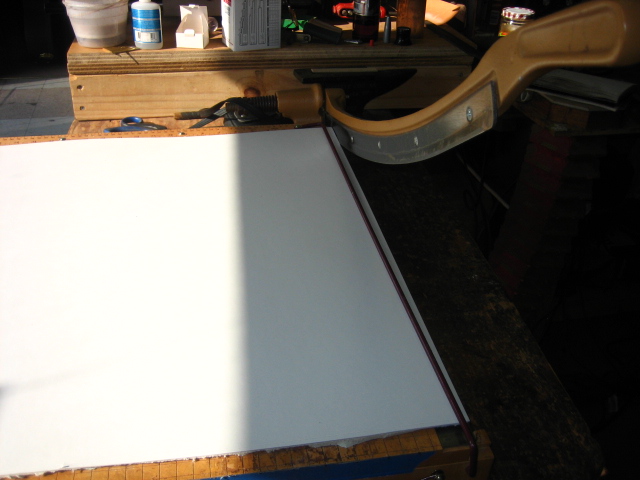
|
Here is the intended recipient
of the new bellows, a standard six sided anglo. I am going to fit
it with
seven fold bellows. This bellows building method will allow you
to construct any number of folds, any depth of folds, any size
concertina with any number of folds.......although I have never tried
one with more that twelve sides.
|
Cotton ragboard is a good choice
of materials, I have used matboard as well. I choose
material that has a neutral Ph. Ragboards, matboards can be
purchased as artshops or frame shops. Color doesn't matter, white
is traditional. I will cut off a 24X24 inch section that will fit
my cutter.
|
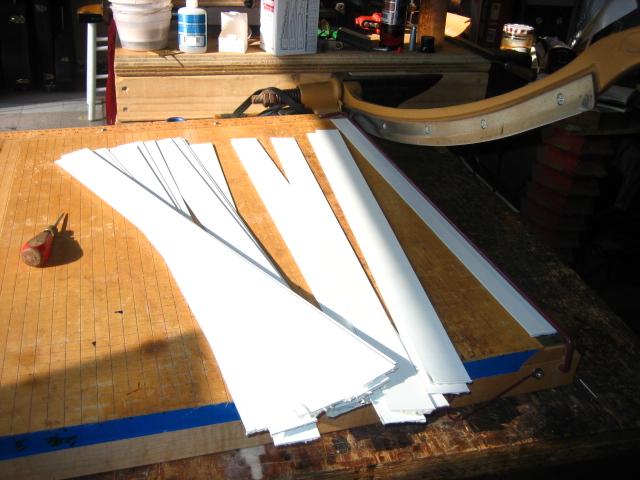
|
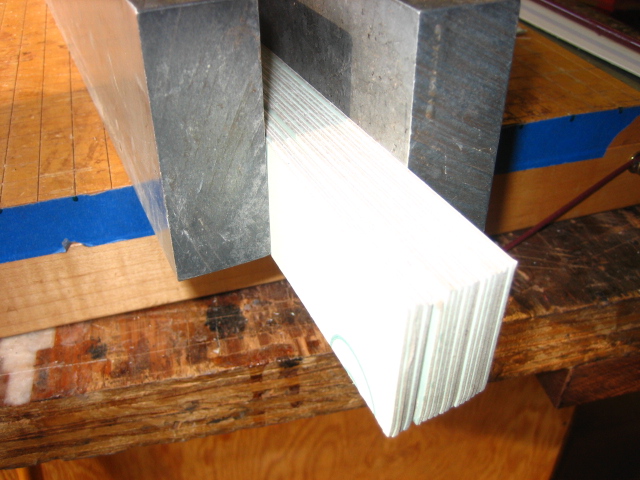
|
I rough cut the board into
1.5 inch strips. This sturdy paper cutter does several jobs
in the bellows building proceedure. In the past, I have used a
knife and a rule, but this is lots faster and has been worth the
investment. Sometimes these cutters are available used....get a
sturdy one and please watch your fingers as you can get a very nasty
cut here.
|
The strips are lined up
carefully and held with a couple heavy pieces of aluminum
bars. I will glue the strips together at the ends to form a
billet of strips that can be further cut to size.
|
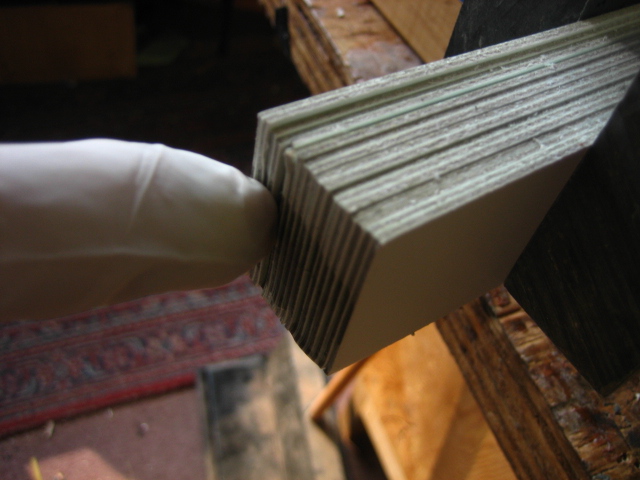
|
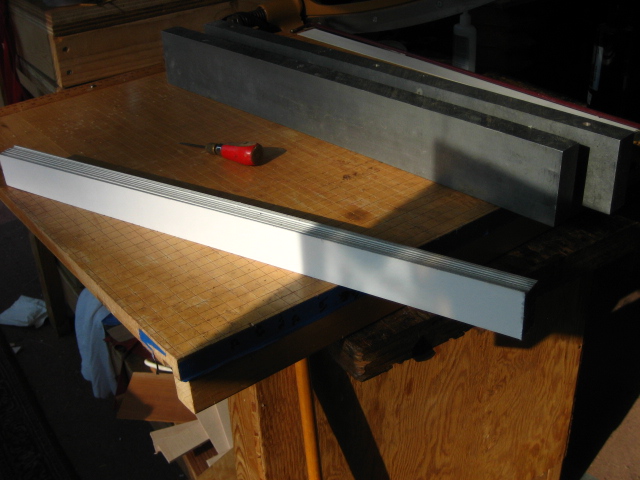
|
I use a medium viscosity
cyanoacrylate for this part. I massage the glue into the
ends. Use a finger cut from a rubber glove
|
The billet of strips ready for
the next step.
|
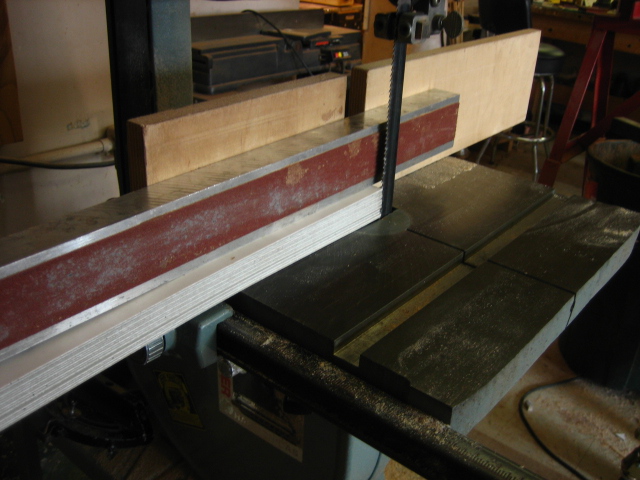
|

|
Moving on to the band saw, dress
one side of the billet at 90 degrees. The metal bar sits on the
stack of strips to help it behave during the cut.
|
Prepare for the second
cut, I set the cut at 1 1/8 inches. This can be changed if
you want a deeper fold on your concertina bellows.
|
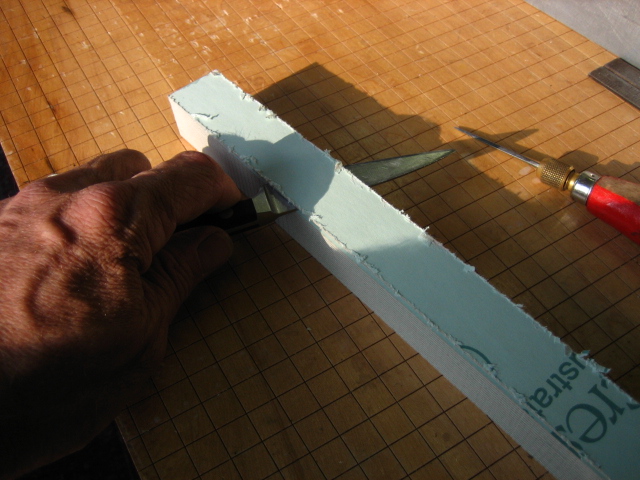
|
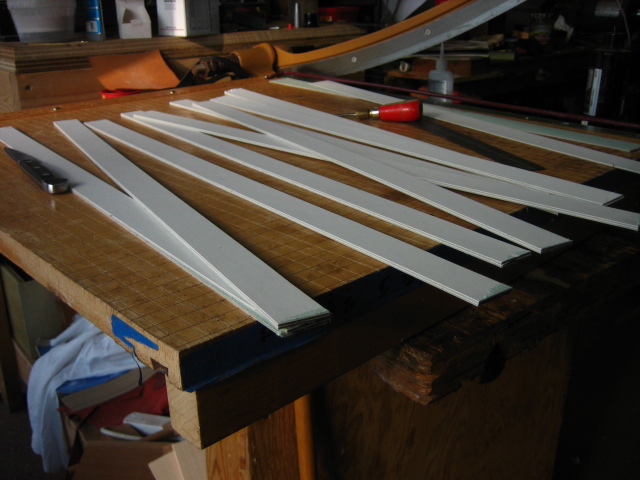
|
Did I mention that a couple of
extra strips in the billet will let you remove the shaggy exit
cut? With a dull blade, separate the billet into pairs of
strips.
|
You will need eight pairs of
strips
|

|
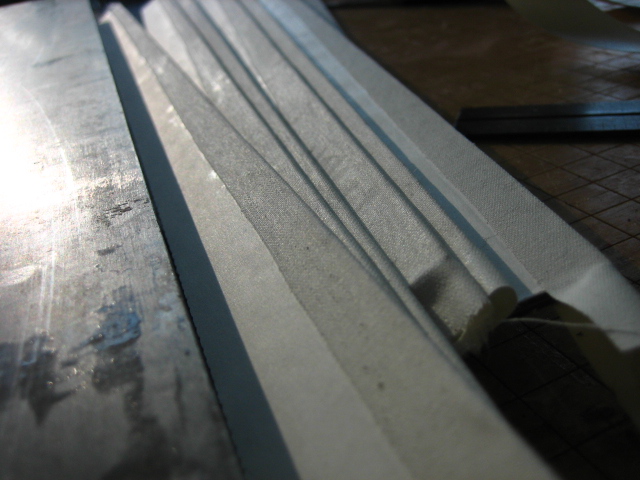
|
This is gummed cambric
tape. I have made my own with linen and hide glue, but it is a
little messy. This material is available from TALAS in the
States. It is a bookbinders material, non acid and very strong.
|
Drag the gummed tape through a
water bath and neatly apply to on edge of each of the pairs.
|
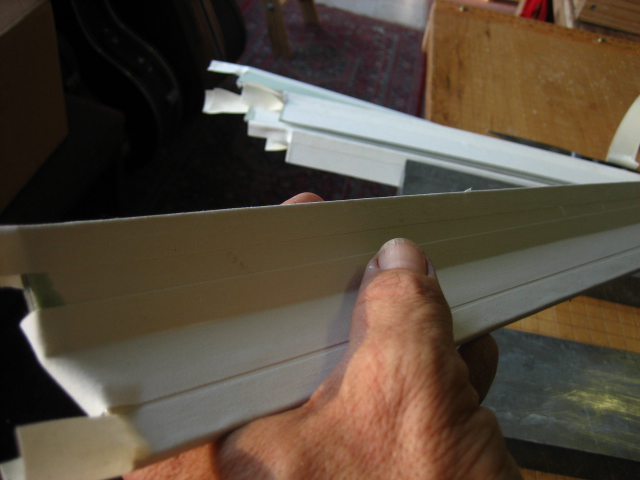
|
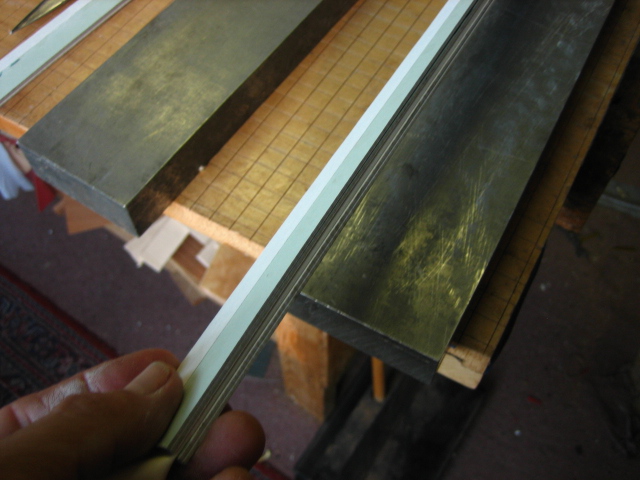
|
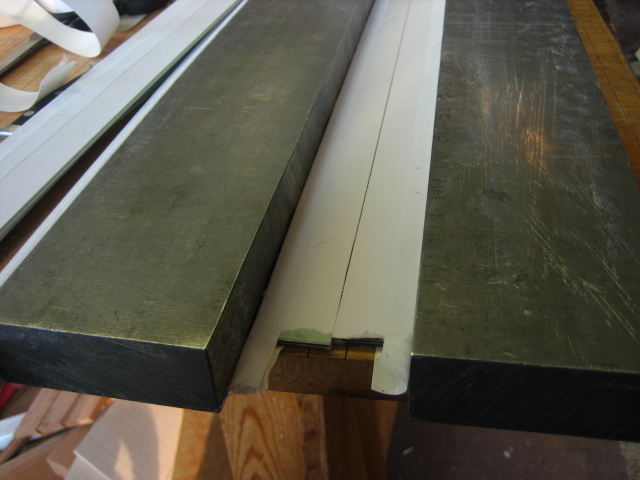
|
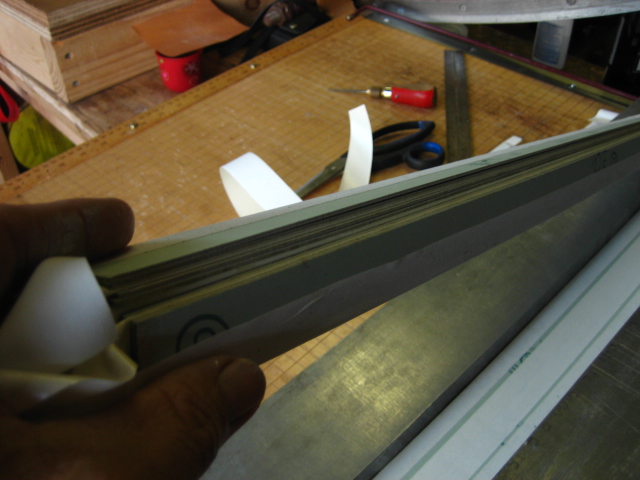
|
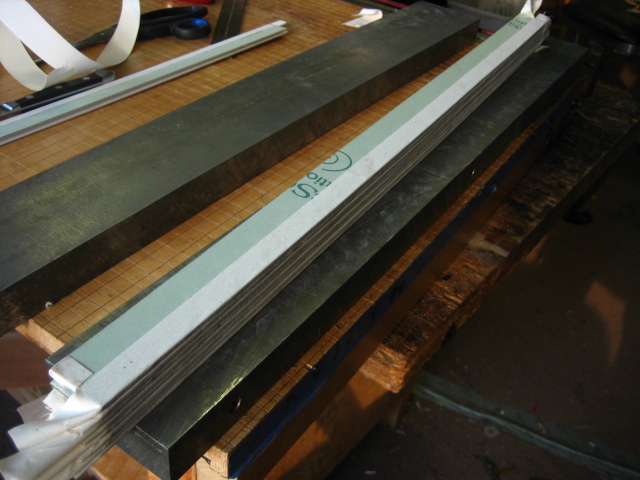
|
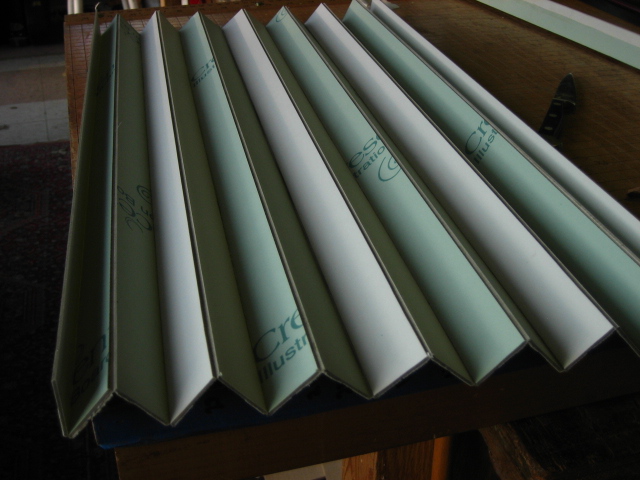
|